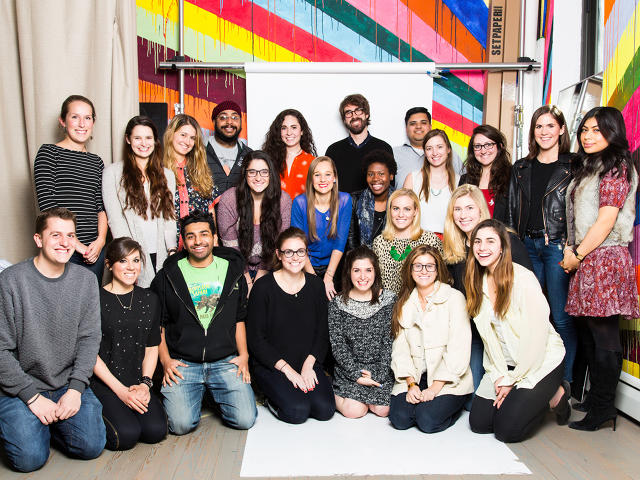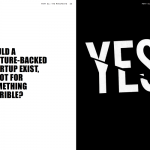A Founder Is A body of workers of one: methods to Delegate To your self
CEO, CFO, CTO . . . how does a solo founder juggle those roles? Olga Vidisheva of Shoptiques, who’s carried out it, has helpful, colour-coded ideas.
may 28, 2015
stroll into the lower new york places of work of Shoptiques, a boutique buying website online, and you’re confronted with dozens of trendy employees clustered at desks representing totally different departments: expertise, customer support, gross sales, and so forth. each and every Monday, Olga Vidisheva, Shoptiques’s CEO, meets with the leaders of these departments, setting objectives for them through the week. however just a few years ago, all of these departments—and each and every of those leaders, in a sense—needed to exist in only one mind: that of Vidisheva herself, who founded Shoptiques on her own.

When Vidisheva first based the corporate, she drew a diagram that regarded form of like a domestic tree. at the top was the word “Shoptiques.” Then three branches representing the three pillars of the trade she anticipated: boutiques, shoppers, and the platform. Then, underneath these, branches representing roles associated to every of those pillars. She had created a taxonomy of jobs she want to hire for, but she had no money to rent. instead, she realized, there would have to be seven or eight Olga Vidishevas: CEO, CFO, CTO, salesperson, knowledge person, and so forth.
A much less geared up particular person might simply have listed duties she needed to succeed in, and gone down the duties one by one, or worse, have attempted to handle tasks as they arose, pell-mell. however Vidisheva remembered something any person had informed her about engineers: “They stated they’re like jugglers juggling these little balls. for those who interrupt them, the balls will fall down, and also you’ll have to start juggling once more, and that might take 15 to twenty minutes.” Vidisheva realized that as a CEO/CFO/CTO/etc., multi function, she too was a juggler. “I had to juggle roles.” And it used to be important not to interrupt herself.

She realized that in order to reach peak effectivity, she would want to basically agenda blocks of time for her to be a special, specific person. For a four-hour block on Saturdays, she might be a CEO in blue-sky mode, pondering completely about long-time period strategy. Tuesday morning she would possibly have blocked out for media members of the family, Wednesday morning for customer service, and so on. “I was once putting totally different hats on,” she remembers now. And as soon as a hat was on, it stayed on. If CEO Olga got an idea that used to be very best delegated to gross sales supervisor Olga, then the previous sent the latter an email, to be addressed later. “i might walk into a retailer and assume, ‘I need to be fascinated with this—but I’m not fascinated by it now.’”
She remembers these early days that the minimal helpful unit of time to put on a undeniable hat was two hours, but that it was most suitable to put on no more than two hats in in the future. A smartly-scheduled day would possibly have half the day in a single function, 1/2 the day in another. There was once technique behind the schedule of hat sporting, too: gross sales made most experience for weekdays in the late mornings, when boutiques just opened. Mission-essential monetary stuff used to be very best finished on weekends, when the coworking house she labored in on the time was quiet and empty, permitting laser center of attention.
She become skilled at labeling emails, the use of different colored flags in Apple’s Mail software. Finance-associated emails had been labeled one color, sales-related emails any other, and so forth, and she or he would flip to them when the schedule called for it. Her inbox to these days is essentially a multicolored to-do checklist. “people who find themselves not environment friendly attempt to do things as they arrive,” she says. She’s seen the group of workers participants who reply to her emails in an instant; to assist them be more efficient, she instead sends them fewer, longer emails that group multiple directives together.

It takes a preternatural level of focus to do what Vidisheva did, in addition to a real passion for her business (within the early days, she says, she labored about 18 hours a day). however even those lacking that stage of focal point or pressure can scan with Vidisheva’s methodology, she says, simply by getting a bit extra aggressive with Google Calendar, most likely with just a fraction of your days to begin. Her sister is applying to medical school, as an example, and Vidisheva has coached her into scheduling discrete units of time throughout the week to focus on her essay. “whilst you separate your schedule, you recognize in advance of time when you’ll get the whole lot accomplished. You’re never stunned. There’s by no means, like: ‘Oops! I by no means bought to that!’”
The job of a solo founder may also be daunting, says Vidisheva. “You’re seeking to get a lot achieved, you don’t know the place to start, but until you start somewhere nothing will get accomplished,” she says. “I’ve seen folks paralyzed by way of that.”
for those who’re founding a company, and staring down a list that seems like the work of 10 people, be reassured that it probably is the work of 10 folks. All you need to do is realize that these 10 persons are you.
(106)














